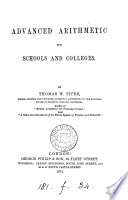 | Thomas W. Piper - 1874 - 352 pages
...reduce them to one denomination before proceeding any further. II. RULE FOR SOLVING THE PROPORTION.— Multiply the second and third terms together, and divide the product by the first. Ex. 1. If 6 men earn 42s., how much will 36 men earn ? Here the answer must evidently be in wages,... | |
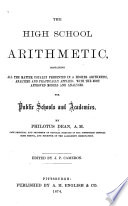 | Philotus Dean - Arithmetic - 1874 - 472 pages
...when the answer should be greater than the third term; otherwise write the less far the second term. Multiply the second and third terms together, and divide the product by the first term. NOTE 1. — If the number sought is made any other term of the proportion than the fourth, each... | |
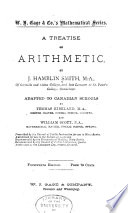 | James Hamblin Smith, Thomas Kirkland - Arithmetic - 1877 - 376 pages
...place; if less, in the first. Then having reduced the first and second terms to the same denomination, multiply the second and third terms together, and divide the product by the first term. The quotient will be the answer required. NOTE. — After the third term has been written down... | |
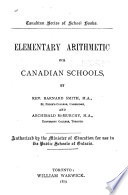 | Barnard Smith, Archibald McMurchy - Arithmetic - 1879 - 200 pages
...second terms together for a final second term, and retain the former third term. In this final stating multiply the second and third terms together and divide...the product by the first. The quotient will be the answer to the question in the denomination to which the third term was reduced. Ex. 1. If 5 men oarn... | |
 | Shelton Palmer Sanford - Algebra - 1879 - 348 pages
...Arithmetic, where we have three terms given to find a fourth. The rule as practised in Arithmetic is to " multiply the second and third terms together, and divide the product by the first ;" which is equivalent to saving that The last extreme is equal to the product of the tiro means, divided... | |
 | Robert Johnston (F.R.G.S.) - 1879 - 320 pages
...least of the other two in the second place. 3°. Then divide the product of the second and third terms by the first; the quotient will be the fourth term or answer. CA8E L 124. When the three given terms are each of one denomination. Various Departments, Ex. 1. A... | |
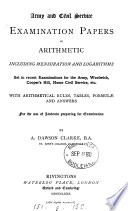 | Arthur Dawson Clarke - 1880 - 286 pages
...numbers. (iv.) Cancel, if possible, the first and second terms, or the first and third terms. (v.) Multiply the second and third terms together, and divide the product by the first term, and the resulting answer will be of the same denomination as the third term. If 32 Ibs. of sugar... | |
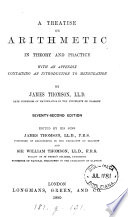 | James Thomson - 1880 - 408 pages
...yards, and that the third term is in one denomination, namely, shillings, we multiply the numbers in the second and third terms together, and divide the product by the number in the first term. The result of this operation is the number 5, which is the number expressing... | |
 | A. Melrose - 1881 - 314 pages
...Reduce the first and second terms to the same name, and the third term to the lowest name in it ; then multiply the second and third terms together, and divide the product by the first term for the answer in that name to which the third term was reduced. Ex. 1. — If 12 acres of land... | |
 | James Bates Thomson - Arithmetic - 1882 - 416 pages
...other numbers in pairs, or two of a kind, and arrange them as in simple proportion. (Art. 687.) III. Multiply the second and third terms together, and divide the product by the product of the first terms. The quotient will be the answer. PROOF. — // the product of the first... | |
| |